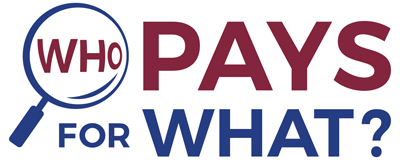Although a higher percentage of shops are now seeking to be paid for the labor involved in applying battery support during a vehicle scan, fewer of those shops say they are regularly being paid for the procedure.
“That is unfortunate,” said shop trainer and consultant Mike Anderson of Collision Advice of the finding from a recent “Who Pays for What?” survey. “When we first asked about this procedure back in 2018, nearly 70% of shops said they never negotiated to be paid for this. Today that is down to 54%, which is great. But only 40% of those shops said they are regularly reimbursed for the time involved by the eight largest insurers. That’s the lowest percentage we have seen in five years. I honestly don’t have an explanation for that.”
Anderson said hooking up battery support is important because it ensures proper system voltage throughout the diagnostic scanning process. When vehicle voltage falls below normal levels, scan results can be unreliable, or re-programming of the vehicle can fail entirely.
This "not-included" operation can sometimes require a significant amount of labor time, Anderson said.
“It can require removing components to access the battery, and requires the use of a special battery maintainer---a jump box, a trickle charger or a battery charger is not considered proper battery support,” he said. “And one of the things that I have learned is that battery support should be connected for at least 10 minutes before a scan operation is performed. There is no reason this procedure should not be paid for when it is necessary.”
The survey also asked for the first time about in-process vehicle scanning.
“I’ve learned that this is often an absolutely necessary procedure, so we added it to the survey,” Anderson said.
He explained some vehicle features may be turned off or placed in fail-safe mode after the removal and reinstallation of a related component, or due to “lost communication” trouble codes that are set.
“If you don’t scan the vehicle and address that prior to a test drive, it could generate another trouble code, or you may not be able to do a proper calibration,” Anderson said.
The survey found about 21% of shops reported conducting in-process scans on all or most vehicles---in comparison, more than 90% of shops now say they conduct pre- and post-repair scans on all or most vehicles.
“I expect that 21% to grow in the future,” Anderson said.
More than one-third of shops (36%) billing for in-process scans said they are paid for them “all” or “most” of the time by the eight largest national insurers, with about another one-third saying they are paid at least “some of the time.”
The surveys over time have found some differences in the payment practices of the eight insurers. In 2017, State Farm and USAA were more likely than the other six large national insurers to pay the charges for a pre-repair scan. For example, 57% of shops reported State Farm regularly paid for pre-repair scans, while only 46% of shops said that about Allstate and Progressive.
But over the next couple of years, most of the insurers began to pay for the procedure more regularly than State Farm. By 2019, as many as 79% of shops reported State Farm was regularly paying for pre-repairs scans, but on average 86% of shops said that about the other six insurers. State Farm remains at the bottom of the pack in the latest survey.
The latest “Who Pays for What?” survey, focused on not-include body labor procedures, is open throughout April. Shops can visit www.crashnetwork.com/collisionadvice to participate.










John Yoswick